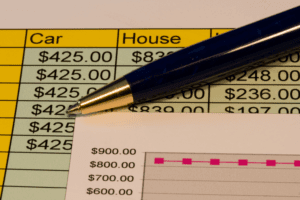
Creating a business budget is a crucial step for achieving financial stability and growth. By examining your revenue, deducting fixed and variable costs, estimating profit, and tracking cash flow, you can create a detailed financial plan for your business. The right accounting tools make it easy to create different types of small business budgets. FreshBooks accounting software helps you track and categorize expenses, create budget spreadsheets, and analyze financial data to review your budget.
Marketing

An emergency fund should be kept separate from your day-to-day business funds, so you know exactly how much you have set aside should you need it. You can even earn interest on it with a dedicated business savings account – such as our Tide Instant Saver, where you can earn 4.07% AER (variable) on your savings. It’s also helpful to put together all your financial results into a profit and loss (P&L) statement.
Set your budget

It is typically created for monthly, quarterly, normal balance or annual periods and acts as a road map for your business’s financial health. An operating budget typically includes fixed and variable expenses and revenue. It doesn’t include other financial data like investments, marketing, or overhead administrative costs. The operating budget is one of the simplest budgets and allows the business to assess the direct costs needed to continue running smoothly. Profit estimates are calculated by deducting all expenses from your total projected revenue.
- Once you’ve identified them, sum them up to get a precise figure of your fixed costs on a month-to-month basis.
- FreshBooks accounting software helps you track and categorize expenses, create budget spreadsheets, and analyze financial data to review your budget.
- The amount will vary, but a good rule of thumb for how much to have in an emergency fund is to save three to six months’ worth of basic living expenses.
- Although it’s more difficult to predict future variable costs, creating a broad estimate helps you budget for these expenses.
- It helps you see where your money is going and where you might need to tighten the purse strings.
Budget Period
“One thing that is unique to small businesses as a whole is that there are so many different types of businesses. This means that there is no one-size-fits-all budget plan for small businesses. Each business should tailor its budget plan to its own specific needs and circumstances,” explains Lindsey Hyland, Founder of Urban Organic Yield. By organizing your data into these documents, each month becomes easier to track than the last.
Create a profit and loss statement
These are considered fixed costs because they don’t change much from month to month. Review your expenses (either via your bank statements or through your FreshBooks reports) and see which costs have stayed the same from month to month. Budgeting is an easy, but essential Partnership Accounting process that business owners use to forecast (and then match) current and future revenue to expenses. The goal is to make sure that enough money is available to keep the business up and running, to grow the business, to compete, and to ensure a solid emergency fund.

Initially construct the budget model to match the line items appearing in the existing income statement. By doing so, you can then take the budget information in the model and drop it into the accounting software to produce budget versus actual income statement reports. This is a good time to make alterations to the income statement line items, if you think that having more or fewer lines items would be more understandable for readers. Creating a small business budget may seem daunting at first, but by breaking the process into manageable steps, you can develop a budget that will keep your business financially healthy. With our small business budget guide and template, you can create a small business master budget. We hope that the template will help you understand why budgeting is crucial to the planning, organizing, and controlling business operations.

LocaliQ’s marketing budget template
- This will tell you whether you can cover your expenses, or if you need to find areas where you can cut back on spending.
- The longer you’ve been in business, the more information you’ll have to draw on to create an accurate forecast.
- Use a small business budget template or spreadsheet to itemize and add up your income.
- Inventory and materials may fluctuate based on sales or market needs.
- You want to lower your variable costs in lean months, starting with discretionary expenses.
- A well-crafted and regularly maintained budget is more than just a financial document—it’s a powerful instrument for achieving your business goals and driving long-term success.
Your business budget serves as a benchmark for measuring your company’s financial performance. By setting clear financial goals and regularly comparing actual results to your budgeted figures, you can monitor your progress how to create a business budget and identify areas of overperformance or underperformance. If your small business doesn’t have access to these features or has simple financials, you can download free small-business budget templates to manually create and track your budget.

